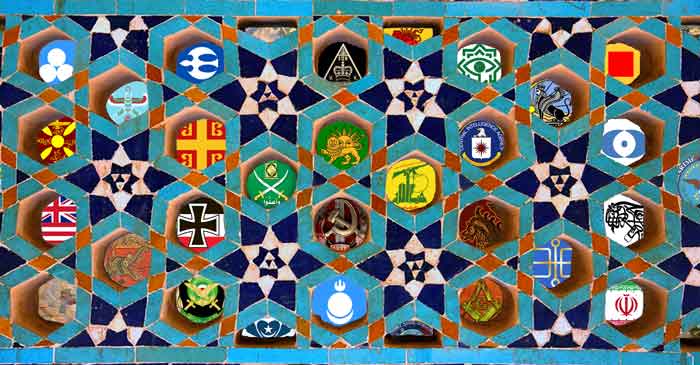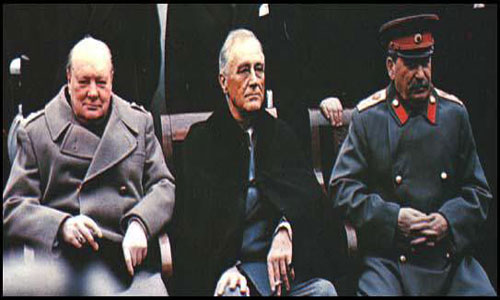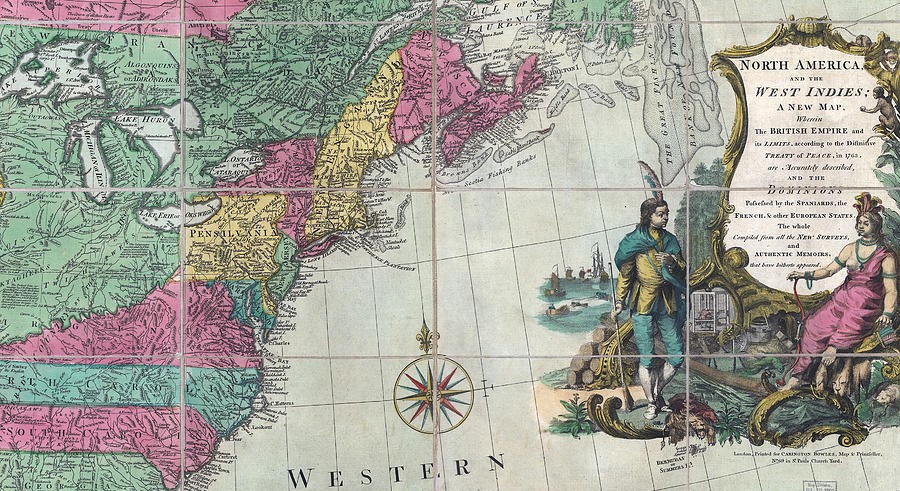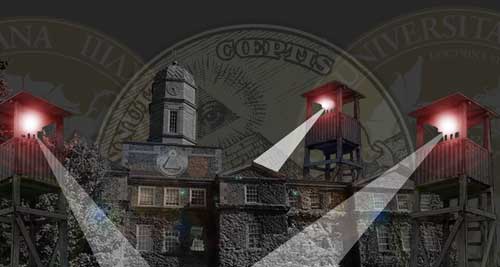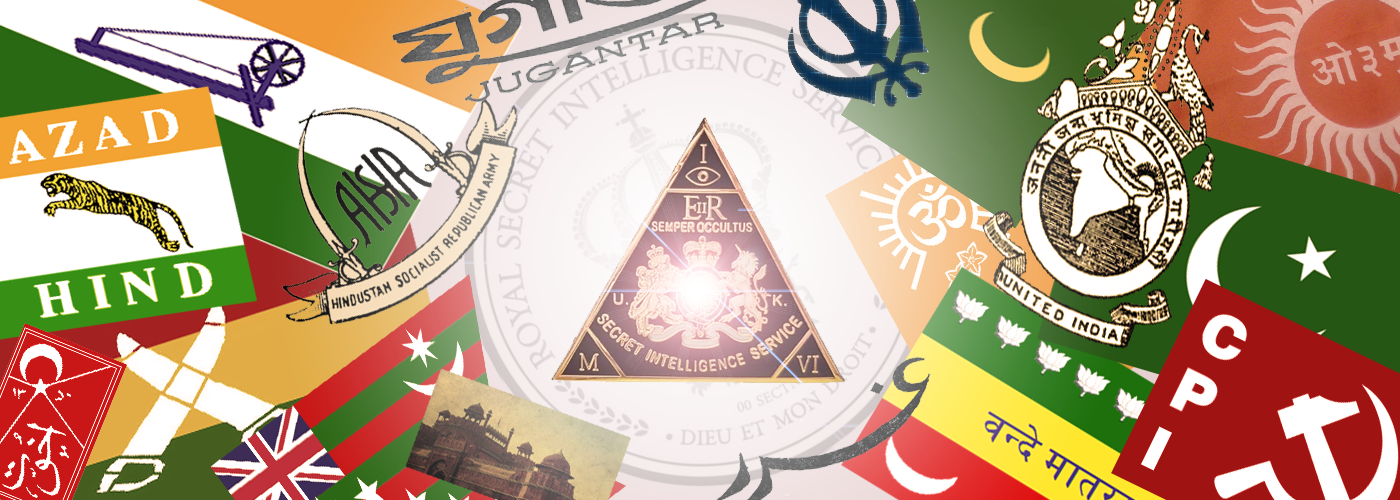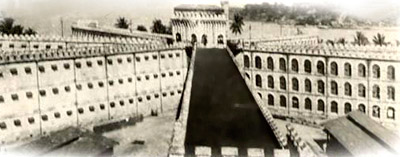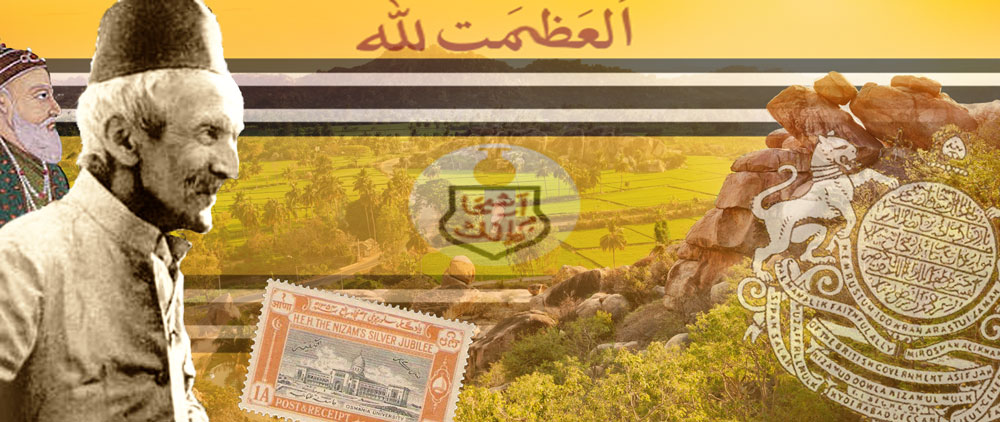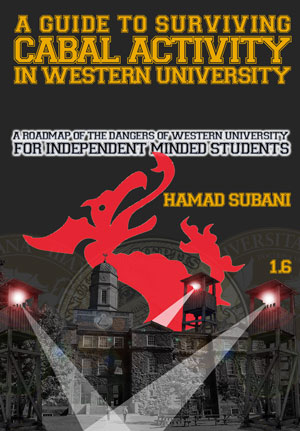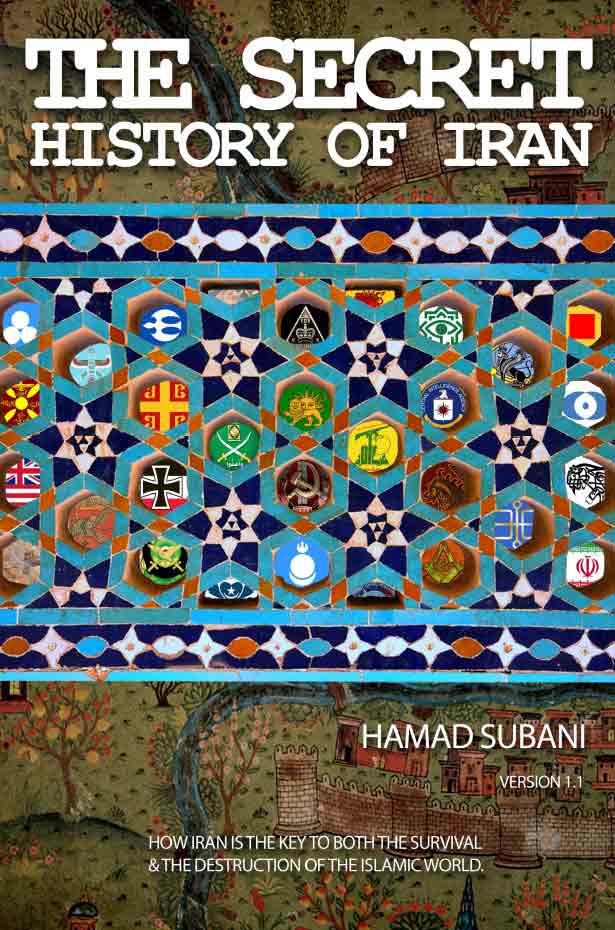The Secret History of Uganda
This is a story of how the Phoenicians attempted to takeover one of the most untouched and pristine regions of Africa, with mixed results.
Africa is a huge continent. But thanks to the distortions introduced by Mercator maps which were used to propagandize the extent of the Soviet Union in the 20th century, the scale of Africa easily escapes notice. Then there is the coastal Africa, the culture of which was exclusively shaped by non-Africans. And then there is the real, pristine Africa, where dense jungles prevented the entry of foreign influences[1]With the exception of Islam. As we shall see, a large percentage of Ugandans are Muslim. And this is despite the fact that Uganda never succumbed to the rule of an Arab-Muslim army. And this flies in the face of claims that Islam only gained following through force. and sophisticated indigenous cultures and civilizations took root. Little remains of them today though. But you can still hear the echoes if you strain your ears hard enough. Here is what Europeans had to say regarding the Kingdom of Buganda, the predecessor of modern Uganda:

Europeans admired Buganda and often praised the kingdom, considering it the pinnacle of “native political evolution.” Early travel, missionary, and colonial accounts often called the Baganda the “most advanced and intelligent of all central African societies.”
To Europeans, the Baganda belonged to a distinct political and social order and were thus privileged over other ethnic and cultural groups in the region. Henry Morton Stanley described the Baganda as “an extraordinary people, as different from the barbarous pirates of Uvuma, and the wild, mop-headed men of Eastern Usukuma, as the British in India are from their Afridi fellow-subjects, or the white Americans of Arkansas from the semi-civilized Choctaws.”
Perhaps one of the best organized and most civilized of African kingdoms at the present day. In fact, putting aside the empires of Abyssinia and Morocco (as entirely independent states ranking with other world powers), Uganda would take a high place among those purely Negro kingdoms which retain any degree of national rule.
— Harry Johnston, The Uganda Protectorate,
Colonel Lambkin and the explorer Harry Johnston both described the Baganda as the black Japanese or “the Japanese of the dark continent” and “the most naturally civilized, charming, kind, tactful, and courteous of black people.” Frederick Lugard claimed that Buganda was “probably the most civilized of any native state in Africa.”
Former US President Theodore Roosevelt was amazed by the kingdom when he visited Africa in 1909, claiming that Buganda stood “far above most … in their capacity for progress towards civilization.” Visiting Buganda had a profound impact on him and compelled him to rethink his negative views of African people, and even African Americans in the United States. The reality of Buganda’s political sophistication commanded his respect.

Apparently, these dense jungles, and their equally unpredictable inhabitants had made the interiors of Africa, such as present-day Uganda, time capsules of African culture and civilization. That would not last for long, as the Phoenicians, hiding behind European colonial armies, started tiptoeing into Uganda. In 1858, two British spooks, Burton and Speke, with a caravan of Baluch mercenaries from India, finally managed to reach lake Tanganyika, considered to be the main source of the Nile river.
Phoenicia spookery in Uganda rose to feverish levels once the Phoenicians managed to push Egypt out of Ottoman control, and when they installed their own cryptos known as Khedives. Recall that the first of these creatures immediately conducted a massacre of the Turkic Mamluks, who had always protected Egypt from the Crusaders. In 1869, a British spook named Samuel Baker left Khedive Egypt with thousands of Egyptian troops in a failed expedition to take Bugunda. He was forced to retreat in desperate conditions.
Megaspook Henry Morton Stanley visited Buganda in 1875 and and started spying on their war capabilities. He even tried converting their king to Christianity. In his initial spying-surveillance, Stanley counted 125,000 troops marching off on a single Bugundan campaign, supplemented by a fleet of 230 war canoes serving as naval support. In Buganda’s capital, Lubaga, Stanley found a well-ordered town of about 40,000 surrounding the king’s palace, which was situated atop a commanding hill, surrounded by a wall more than four kilometers in circumference. Snatching Bugunda was not going to be a piece of cake for the Phoenicians.
The British-Phoenicians turned to stirring up an endless slew of wars and conspiracies under the guise of spreading Christianity. Their main targets of conversion were influential people at the Bugunda court. The Bugundan King had many of these Christian “converts” executed, to the dismay of the British.
Soon enough, the Phoenicians had a Protestant faction and a Catholic faction, backed by Britain and France respectively. This is classic Phoenician misdirection. The Phoenicians had only one objective, and that was taking over Bugunda. But openly doing so would turn everyone against them. So they engaged in covert military operations. To justify the presence of their military, they pretended to be fighting another Christian faction (which in turn was controlled by another arm of the Phoenicians as a false opposition). Whereas in reality, both factions were aiming for the throne of Bugunda. By 1890, both factions had reduced the king to a figurehead, exactly as the Phoenicians had originally planned, and had divided the territory of Bugunda between them. Soon enough, the British annexed Buganda and some adjoining territories to create the so-called Uganda Protectorate in 1894. Note that they were trying to erase even the mention of the name Buganda. Classic Phoenician wordplay.
With France retreating from colonial adventures, Germany arrived to fill its boots in Bugunda. And soon enough Germany was given a special role by the Phoenicians. The Phoenicians wanted to snatch the entire surface area of Lake Tanganyika,[2]This is the world’s second biggest freshwater lake. so that the British Navy could control all trade and movement that occurred over its waters. This would be a death blow to the Kingdom of Bugunda. And so, the German Navy arranged for two measly steamers to prowl the lake. And the British Navy pretend-battled them in 1916. In the predictable aftermath, the entire lake came under British control.
The British were forced to grant independence to Uganda in 1962. In the new arrangement, the old Kings of Buganda continued to maintain a ceremonial role as “Presidents.” And Buganda had the status of a regional kingdom within Uganda. The Phoenicians immediately went to work, with the intention of transforming the entirety of Uganda into a Communist state. The problem was that the Kingdom of Buganda was still too strong in Ugandan memory and culture to disappear overnight. The Catholic Church initially set up by the French branch of the Phoenicians spawned a new organization known as the Democratic Party,[3]The first leader of this party had a grandson who played for the NFL in USA! whose only focus was dismantling all remnants of the kingdom of Bugunda and its Aristocracy. Another enemy of the Kingdom of Bugunda was Milton Obote, of the so-called Uganda People’s Congress, who became Uganda’s first Prime Minister. He was a proto-Communist. The British had originally recruited officers for police and military exclusively from the North of Uganda, to avoid empowering the Bantu people of the Kingdom of Buganda, and this arrangement would continue long after “independence.” One such soldier the British had recruited was Idi Amin, a non-practicing Muslim. He had distinguished himself in the King’s African Rifles putting down an anti-British revolt in Kenya in the 1950s, during which he massacred hundreds of Kenyans.
The Bugunda loyalists started undermining Obote, by asking for an investigation of his involvement (along with that of his Army Chief of Staff, Colonel Idi Amin) in plunder of ivory and gold in neighboring Congo. Obote responded in 1966 by suspending the constitution, abolishing the ceremonial office of the President, which had been held by Bugundan royals (known as the Kabaka). He went even further, and proceeded to strip Bugundan royals of all authority. To quote,
- The abolition of independent public service commissions for federal units. This removed the Kabaka’s authority to appoint civil servants in Buganda.
- The abolition of the Buganda High Court – removing any judicial authority the Kabaka had.
- The bringing of Buganda financial management under further central control.
- Abolition of lands for Buganda chiefs. Land was one of the key sources of Kabaka’s power over his subjects.
In May 1966, Obote would order Idi Amin to attack the palace of the Kabaka Mutesa in Kampala. After a fierce battle in which thousands died, Idi Amin overran the palace, while the Kabaka was offered exile in London. President Julius Nyerere of neighboring Tanzania, who supported Obote, stationed a large force at the border to prevent the Kabaka from regrouping there and launching a counter-attack. To quote,
Within a few days, the Kabaka and two of his bodyguards were able to cross the border to Burundi and exile. After brief stays in Nairobi and Addis Ababa he was given asylum in the United Kingdom where he later died under mysterious circumstances, in 1969. Various Baganda chiefs, members of the royal family and others thought loyal to the Kabaka, were imprisoned. The Lubiri Palace was almost completely destroyed in the course of the fighting and the looting which followed. Historic artifacts and royal regalia were stolen and destroyed, including the Mujaguzo drums. This desecration caused immense psychological suffering for many Baganda who regarded the event as an apocalypse.
As president, Obote implemented Communist policies, because of which the country suffered from severe corruption and food shortages. The government appropriated a 60% share in major private corporations and banks in the country in 1970. Indian traders started being persecuted.
However, Obote ran afoul of his Phoenician backers when he decided to prevent Uganda from being used by the Phoenicians to stage conflict against Islamic Sudan.[4]Idi Amin was deeply involved in these covert wars, and was likely in the payroll of British Intelligence. To quote,
The Israeli government was training the Ugandan police and military and providing arms to the Anyanya in Southern Sudan who were engaged in a guerilla war with the Sudanese government. The Obote government withdrew support for the rebels and arrested a German mercenary called Steiner and extradited him to Sudan for trial. The Israeli government was unhappy with these events.

This caused considerable embarrassment to the Israeli government. In retaliation, the Phoenicians green-lighted Israel to take down Obote (in coordination with British Intelligence). They were already impressed with Idi Amin’s ruthless uprooting of Bugunda royals, and so, he was their replacement candidate. In January 1971, Obote was overthrown by the army while on a visit to Singapore, and Military Commander Idi Amin became president. The Mossad coordinated the entire coup, with Israeli soldiers being publicly visible in the capital. Amin’s military dictatorship was instantly recognized by Israel, Britain, and the United States. Idi Amin would be surrounded with Israeli “advisors.” Amin would survive eight attempted coups because he quickly changed the composition of his army. Instead of having soldiers from different factions of Uganda, he started recruiting Sudanese and Nubians. As his handlers would find out, he was a bit too smart. And he ended up outsmarting them. There are theories that Amin had some Bugundan royal blood in him. If those are true, then that would mean that the Phoenicians had inadvertently placed a big, powerful, cunning, beast-of-a-man with Bugundan royal blood onto the throne of Uganda! Now consider the fact that they were trying to destroy Bugundan royalty since the last two centuries. Sometimes conspiracies end up doing a 360.
In early 1972, Amin jettisoned his Israeli “advisors” and instead started courting Saudi Arabia. Since he was already suspicious of the British, the Phoenicians rushed in with their very own set of “alternative allies,” so that his relationship with Saudi Arabia would not deepen. These were Gaddafi of Libya (crypto-Jewish), Communist East Germany and the Soviet Union. East Germany quickly moved in to “manage” Amin’s policing and Intelligence.
Persecution of Indian traders had already started under Obote, who had no use for them in a Communist Economy. But Idi Amin, despite not being a Communist, rather strangely gave most of Uganda’s 80,000 Asians 90 days to leave the country, and seized their property, homes and businesses. He later claimed he had a dream in which he was warned that the Asians were up to no good.
What most of us know is that the original persecution of Indians which had started during Obote was aimed mainly Hindu, Gujarati origin Patels, who were mainly traders. And that these folks were again, the biggest victims of Idi Amin’s campaign. But what if there were other groups the persecution campaigns were directed at?
Idi Amin’s campaign against the Indian disapora started in August 1972. Earlier that year, he had broken ties with Israel and Britain. Coincidence? Was there a possibility that the Indian diaspora was being mobilized against him by British Intelligence? If that was the case, then there may have been sub-groups within the Indian diaspora who were historically allied with British Intelligence. Would one such group be the Nizari Ismailis? Coincidentally, the first-ever Indian laborers to set foot in Uganda in 1895 came as part of a railway contract awarded to a Karachi-based Ismaili businessman. Even when the descendants of such laborers would acquire Ugandan citizenship, they would still remain part of small, close-knit, business communities, where they were pretty much dependent on big Ismaili businessmen for their economic security. And historically, there have been many cryptos among the Gujarati business community regardless of religious affiliation, who happily interloped with the Nizari Ismailis.
In case you are not in the know, the Agha Khan/Nizari Ismailis started as fake Muslim imposters, creating holdouts for the Roman-Phoenicians (later restyled as “Crusaders”) in Egypt following the Islamic conquests. But they ended up getting booted by Saladin. Next stop Iran. Where they got booted for their excessive conspiring by the Qajars. Next stop Bombay, British India, where many remain[5]But lately the Indian government has grown suspicious of them, resulting in the relocation of their headquarters to Portugal. Next stop, Karachi, Pakistan, where the army became an obstacle to their political ambitions. You may be wondering who would want to enroll in such a conspiratorial cult. The answer is that this is not just a cult but a full-fledged business network, and membership has its perks. The allegations that the Agha Khans run secret breeding programs among members, resulting in many members having noticeably big ears like them are just malicious rumors.

We do know that the Nizari-Ismailis were originally hopeful of becoming the ruling elite of the newly created nation of Pakistan in 1947. But twenty years later, the Pakistani military proved to be a formidable opponent. Were they offered Bugunda/Uganda as a consolation prize by the Phoenicians? It seems the Nizari-Ismaili community began settling in Kampala, the erstwhile capital of the Bugunda Kingdom around that time. And the Agha Khan became heavily involved in the affairs of that city. Since the British could not install their own population in the region, was the Nizari-Ismaili community, headed by the Agha Khan, expected to play the role of substitute colonists and kingmakers after the real king of Bugunda, Kabaka Mutesi had been chased out in 1966? As the Agha Khan demonstrated in the Indian Subcontinent, he could continue colonist agendas long after European colonists would depart. He could go into the deepest reaches of local politics, where no Englishman could.
There is also reason to believe that the Nizari-Ismailis did not suffer the same level of persecution of their poorer Indian counterparts. To quote,
Kenya and Tanzania similarly closed their borders with Uganda to prevent an influx of refugees. Some of those expelled were Nizari Ismaili Muslims. The Aga Khan IV, the Imam of Nizari Ismailis, phoned his acquaintance Canadian Prime Minister Pierre Trudeau. Trudeau’s government agreed to allow thousands of Nizari Ismailis to emigrate to Canada. The exodus of Ugandan Indians [Ismailis?] took on a new level of urgency in the September following a telegram from Amin to the UN Secretary General Kurt Waldheim, in which it appeared that Amin was sympathetic to Hitler’s treatment of Jews and an airlift was organized. The UN dispatched the Executive Secretary of the Economic Commission for Africa, Robert K. A. Gardiner, who attempted in vain to convince Amin to reverse his decision.
In other words, the Agha Khan was able to not only protect most of his cult-members, but even arranged for their resettlement in places like Canada, where 40% of the token brown people in parliament and state legislatures seem to have some kind of connection to Kampala. They sometimes cosplay as Muslims, which they aren’t. The Phoenicians love this feature as it helps create division and confusion among both Muslims and non-Muslims.
Now re-read the above quote. Neighboring Tanzania allegedly closed its borders to the Indian diaspora when all this started happening. But were Nizari-Ismailis allowed to slip in? There is reason to believe many of them did, and many started organizing the Uganda-Tanzania war of 1979, which led to the downfall of Idi Amin. The father of New York Mayoral candidate Zohran Mamdani was active with these anti-Amin groups in Tanzania.
In 1976, the Phoenicians finalized a plot to take down Amin through an ingenious conspiracy, which featured the Mossad returning to Uganda with guns blazing. The Phoenicians realized that Amin had grown sympathetic to Palestinians, and they decided to exploit that. All Palestinian “resistance” organizations were already controlled by the Phoenicians. And one group controlled and led by German Intelligence (disguised as “radical leftists”) pretend-hijacked an Israeli plane allegedly flying from Paris to Tel Aviv. The plane was full of operatives of the Israeli army, acting in collusion (and maybe some confused token passengers). In a real hijacking, the logical destination would have been Gaddafi’s Libya. Instead, the plane landed there, refueled, and headed to Entebbe in Uganda. Amin was fooled into thinking that he was dealing with an actual hijacking. And so, he caved in to international pressure, and secretly approved of an Israeli “raid” to free the hostages. It was agreed that Ugandan soldiers would not fire at the Israeli raiders when they landed.
Unbeknown to him, the Israelis had packed in their two C-130s (followed by two Boeing 707 jets), an actual replica of Idi Amin’s motorcade, complete with a black Mercedes, Land Rovers and Armored Personnel Carriers. Operatives within Amin’s retinue would convince him to come to Entebbe airport to negotiate with the hijackers, and the Israelis would land, immediately killing Amin. Airport security had already been infiltrated by Kenyans and Kenyan Intelligence.[6]Godwin Sule, Amin’s Entebbe Air Base commander, was absent from his post during the raid, after being lured earlier that day to meet a female at Lake Victoria Hotel! They would then proceed with the fake hijackers and fake hostages (who were actually Israeli military men) to the capital Kampala 36 kilometers away, in the fake motorcade, and install a replacement. More Israeli jets would land at Entebbe, bringing in reinforcements. Kenya was expected to play a major military role in this conspiracy.[7]The Israeli planes refueled in Kenya.

Once the Israelis landed, the fake motorcade alighted and proceeded to the Airport Terminal where Amin was located.[8]This Terminal was originally designed by Israelis and they had all the blueprints. As they approached the Terminal, two Ugandan sentries, aware that Idi Amin had recently purchased a white Mercedes, not a black one, became suspicious and made them stop. The Israelis shot the sentries and an Israeli commando in one of the following Land Rovers opened fire on Ugandan soldiers killing scores of them. The Kenyan Air-force then bombed the airport, destroying dozens of Ugandan planes. Everything that happened after this is a blur. But it is clear that Amin not only survived, but had the Israelis surrounded at gunpoint. To save face, a truce was negotiated with Amin, and the Israelis along with their fake hostages were allowed to leave. But Amin never forgave the Kenyans. 245 Kenyans in Uganda were rounded up and killed, including airport staff at Entebbe. To avoid an impending massacre, approximately 3000 Kenyans fled Uganda. On 24th May 1978, British Intelligence operative Bruce MacKenzie was killed when a bomb attached to his aircraft exploded as MacKenzie departed a meeting with Amin. MacKenzie was the brain behind the “raid” and Amin had him killed.
Amin would eventually be toppled following a full-scale invasion of Uganda by Tanzania in 1979. With Tanzania not being in an economic position for supporting such a war, you can only guess who was waging it. With the exception of Saudi Arabia and some diehard Pakistanis, none of Amin’s allies came to Uganda’s assistance. Even Libya turned its back on granting him exile. He was eventually exiled to Saudi Arabia. There were no efforts (on an international level) to investigate human rights abuses during his reign. Because if extradited and called to the stand, he could open his mouth on many things, including the Entebbe raid. In 1989, Amin secretly arrived in war-torn Zaire to regroup his supporters and take back Uganda. He ended up being captured by the Zairean Government and Saudi Arabia refused to let him back in. He could have easily been prosecuted. But since there was too big a danger of him spilling the beans on many things, the Phoenicians pleaded with Saudi Arabia to take him back, and they did. And he would die in Saudi Arabia.






The Bugundan Monarchy was restored in 1993 and the Bugunda Kingdom is now a Constitutional Monarchy within Uganda. The Indian diaspora has also returned and now contributes to a substantial portion of the GDP. The Nizari-Ismailis have also returned, and in 2017, Aga Khan IV was awarded a honorary citizenship of Kampala.
But real power in Uganda is not with the largely symbolic monarchs but with an autocrat styled as a presentable political leader. Since Amin’s departure, Uganda has been ruled by Yoweri Museveni since 1986. As of 2025, he is the third-longest consecutively serving current non-royal national leader in the world! While Uganda is more or less peaceful, its neighbors aren’t. Museveni has struck conflicts in several neighboring regions, presumably on behalf of his handlers. His invasion of the Democratic Republic of the Congo during the Second Congo War resulted in an estimated 5.4 million deaths!
| ↑1 | With the exception of Islam. As we shall see, a large percentage of Ugandans are Muslim. And this is despite the fact that Uganda never succumbed to the rule of an Arab-Muslim army. And this flies in the face of claims that Islam only gained following through force. |
|---|---|
| ↑2 | This is the world’s second biggest freshwater lake. |
| ↑3 | The first leader of this party had a grandson who played for the NFL in USA! |
| ↑4 | Idi Amin was deeply involved in these covert wars, and was likely in the payroll of British Intelligence. |
| ↑5 | But lately the Indian government has grown suspicious of them, resulting in the relocation of their headquarters to Portugal. |
| ↑6 | Godwin Sule, Amin’s Entebbe Air Base commander, was absent from his post during the raid, after being lured earlier that day to meet a female at Lake Victoria Hotel! |
| ↑7 | The Israeli planes refueled in Kenya. |
| ↑8 | This Terminal was originally designed by Israelis and they had all the blueprints. |







